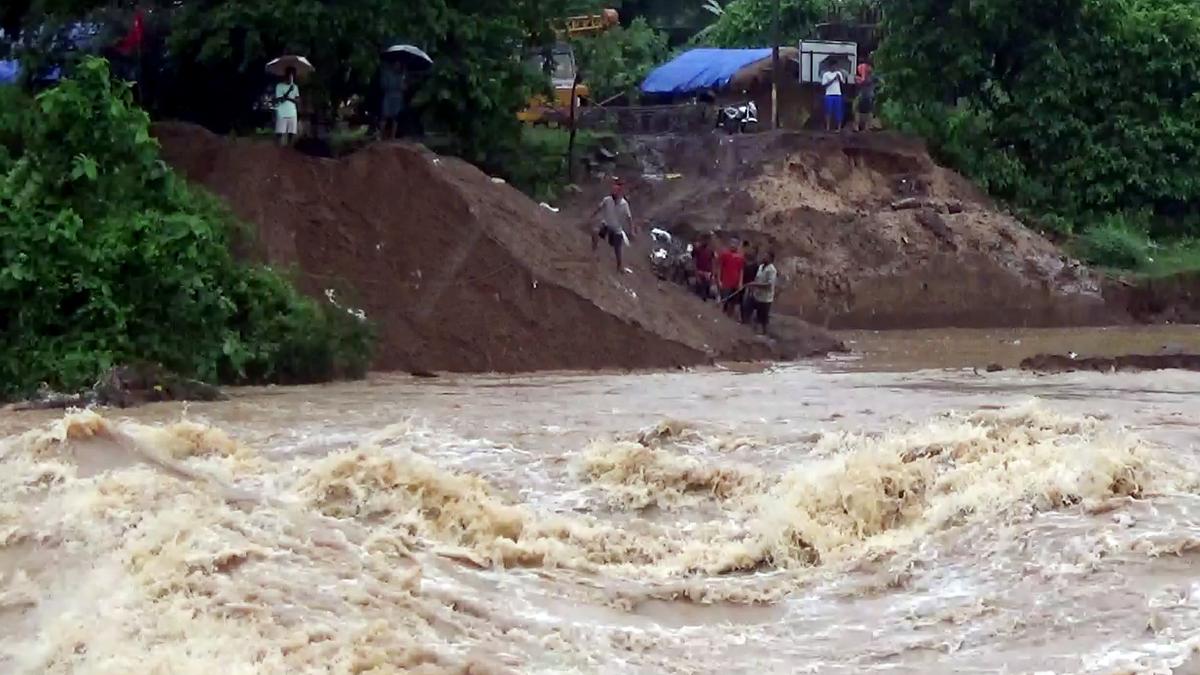 |
|
The onset of monsoon in India, while crucial for agriculture and replenishing water resources, often brings with it a series of challenges, including flooding, landslides, and infrastructure damage. The article highlights the diverse impact of recent rainfall across different regions of the country. Delhi and its adjoining areas experienced light to moderate rainfall accompanied by thunderstorms and gusty winds. The India Meteorological Department (IMD) recorded widespread precipitation, with Safdarjung observatory logging 14 mm of rainfall in the 24 hours leading up to 8.30 am on Monday, June 30, 2025. Palam and Lodi Road recorded slightly higher rainfall amounts, indicating a varying intensity of precipitation across the city. The IMD's issuance of a yellow alert for Delhi-NCR suggests a level of concern regarding the potential for further disruptions due to the weather conditions. A yellow alert typically indicates that the weather is likely to cause some inconvenience to daily life, and people should be aware of potential hazards. This could include traffic congestion, power outages, and localized flooding in low-lying areas. The impact of the rainfall on Delhi-NCR, while not explicitly detailed in the article, can be inferred from the context. The sudden downpour likely led to increased traffic congestion, particularly during peak hours. Commuters may have experienced delays due to waterlogged roads and reduced visibility. The rainfall could also have strained the city's drainage infrastructure, potentially leading to localized flooding in certain areas. Power outages, although not mentioned directly, are often a common occurrence during periods of heavy rainfall and thunderstorms, further disrupting daily life. The agricultural sector in the region might benefit from the rainfall, particularly if it alleviates water scarcity and provides moisture for crops. However, excessive rainfall can also be detrimental to crops, leading to waterlogging and damage to agricultural lands. Therefore, a careful balance is necessary to ensure that the rainfall is beneficial rather than harmful to the agricultural sector.
In contrast to the relatively moderate impact in Delhi-NCR, Himachal Pradesh faced more severe consequences from the heavy rainfall. Several districts reported significant damage due to landslides, waterlogging, and disrupted connectivity. The Sub-Divisional Magistrate of Manali ordered the closure of all educational institutions in Manali and Banjar following a rain alert issued by the IMD, Shimla. This decision reflects the heightened concern for the safety of students and staff in light of the potential for further adverse weather conditions. The closure of schools and other educational institutions is a precautionary measure designed to minimize the risk of accidents and injuries that could result from travel during hazardous weather. The IMD's warning of light to moderate rainfall at many places in the districts of Bilaspur, Solan, Shimla, Sirmaur, Hamirpur, Mandi, and Kangra, with a few spells of intense to very intense rainfall likely to occur at isolated places, underscores the severity of the situation. The combination of heavy rainfall and mountainous terrain makes Himachal Pradesh particularly vulnerable to landslides. The saturated soil loses its stability, and the force of gravity can cause large masses of earth and rock to slide down the slopes, blocking roads, damaging infrastructure, and posing a significant threat to human life. Waterlogging is another common problem in areas with poor drainage infrastructure. The accumulation of rainwater can inundate roads, fields, and residential areas, causing inconvenience and damage. Disrupted connectivity, including road closures and communication breakdowns, further exacerbates the challenges faced by the affected communities, hindering rescue and relief efforts. The long-term impact of the heavy rainfall on Himachal Pradesh could include significant economic losses due to damage to infrastructure, agriculture, and tourism. The rehabilitation and reconstruction efforts will require substantial resources and time.
The Odisha government's decision to place the Balasore and Mayurbhaj district administrations on high alert with an impending flood threat highlights the potential for a major natural disaster. The swelling of several major rivers in the region indicates that the water levels are approaching or exceeding their capacity, increasing the risk of flooding. Evacuation measures are a crucial component of disaster preparedness, aimed at moving people from vulnerable areas to safer locations before the floodwaters inundate their homes and communities. The effectiveness of evacuation efforts depends on several factors, including the timeliness of warnings, the availability of transportation, and the willingness of people to evacuate. Communication and coordination between government agencies, local authorities, and community leaders are essential to ensure a smooth and orderly evacuation process. The social and economic consequences of flooding can be devastating. Homes and businesses can be destroyed, livelihoods disrupted, and access to essential services cut off. The displacement of large numbers of people can create significant challenges for humanitarian organizations and government agencies, who must provide shelter, food, water, and medical care to those affected. The long-term recovery from flooding can be a slow and difficult process, requiring significant investment in infrastructure repair, economic revitalization, and social support. The IMD's announcement that the monsoon hit Delhi a day ahead of the expected onset on June 30, and covered the rest of the country nine days before its usual onset date of July 8, is a noteworthy development. While early monsoon onset may seem like a positive sign, it can also bring with it increased risks of flooding and other weather-related disasters. The overall impact of the monsoon on India's economy and society depends on a complex interplay of factors, including the timing, intensity, and distribution of rainfall. A well-managed monsoon season can boost agricultural production, replenish water resources, and support economic growth. However, a poorly managed monsoon season can lead to widespread devastation and hardship.
Source: Rains in India LIVE: Odisha evacuates people as floodwaters enter Balasore, Mayurbhanj districts
